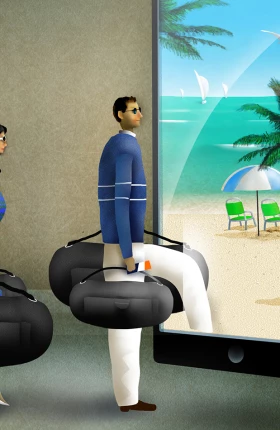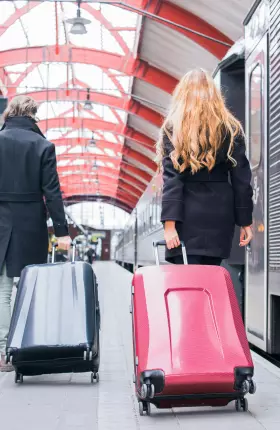Digital marketing in travel and tourism is quickly developing into much more than another e-commerce channel for companies to manage. Online and mobile interaction is becoming the most frequented and substantive interface between travel companies and consumers (other than the actual hotel, resort, airline, or cruise experience, of course)—and therefore a defining medium for travel brands.
Building on an earlier analysis of digital’s impact on lodging and leisure brands, new research by The Boston Consulting Group reveals some surprising insights about how travelers research and make decisions about travel. Travel companies have an enormous opportunity to engage consumers through the digital channel and build enduring relationships. Doing so requires understanding the travel purchasing process in the digital age and organizing and executing to meet consumers’ needs. Dylan Bolden, a BCG partner specializing in marketing and sales, explains.
What are the new factors driving consumer choice in travel in the digital age?
The basic factors have not changed. Strong brands that deliver on their brand promise are still the primary drivers of choice. What has changed is how consumers make travel decisions. From booking a ticket online to checking in for a flight using a mobile phone to tweeting about the onboard experience from 30,000 feet, everything about how consumers interact with companies and brands is evolving.
Our research shows that, for a four-day leisure trip, the average consumer spends 42 hours online—the equivalent of a full workweek—dreaming about, researching, planning, and making reservations, and then sharing their experiences while they travel or when they get back home. This represents a huge opportunity for companies to engage with their customers and build relationships that can endure over time. It also raises questions about how travel companies approach marketing to today's leisure traveler. For many companies, this responsibility is delegated to the digital or online marketing division, which almost certainly means they are not capitalizing on the larger relationship-building opportunity.
First things first—exactly how are consumers spending those 42 hours online?
Relatively little of this time is actually spent making reservations—less than an hour, in fact. Most of their time is spent dreaming about destinations, the things they’re going to see and do—that’s 44 percent. Actual planning takes up 31 percent, which includes vetting hotels, airlines, cruise ships, and the like. Taken together, that’s 32 hours during which the travel company has the opportunity to engage the consumer—either directly, through its website or mobile app, or through intermediaries such as OTAs [online travel agencies], aggregators, and social networks. Now think about this in terms of resources. Travel companies spend tremendous amounts of time, money, and effort to develop TV and print advertising that's consumed in a matter of minutes. Meanwhile, for most of these companies, there's not nearly as much effort, money, or thought going into the management of their brand voice in the digital universe, where consumers engage with it for hours on end, day after day. For the most part, the allocation of resources—including top management time and attention—has not caught up with the shift in marketplace reality.
Surely it’s not as simple as moving resources from traditional media to online?
It’s not simple at all. And in fact, our research argues that “online” shouldn't really be a standalone function to which resources can be shifted or from which they can be taken away. Rather, it’s about the totality of the brand experience. The key development companies need to catch up with is that consumers increasingly are having this brand experience online.
Companies also need to recognize that the online purchasing experience is fragmented, so they have to fight for their share of exposure and attention. The travel consumer’s 42 hours are likely to be divided among 17 major websites, including OTAs, aggregators, service providers, travel guides, social media, and search engines. Consumers enjoy travel, but they worry about it at the same time. They want to make sure they get it right. They spend a lot of time searching for what we call “the source of the truth”—the piece of information or moment of interaction that tells them they are making the “right” decision and that puts their minds at ease. They're not sure whom to trust, so they tend to consult multiple sources—hence those 17 websites.
The two most trusted channels are personal recommendations (not surprisingly, 90 percent of people trust these) and the opinions of other consumers they find online (70 percent trust those). But there is also a big opening for branded content, specifically brand.com websites, which on average enjoy the same level of trust as online consumer opinions. The catch is that there is huge variation in the degree of trust these sites command. Some enjoy the trust of as many as 94 percent of consumers—higher even than personal recommendations—while others rank as low as 54 percent.
Consumers would like to consolidate, in terms of both time and complexity, but as I said, they don’t want to get it wrong. There’s a big opportunity for the brands that can build trust: they can seize a larger share of the 42 hours and concentrate the amount of time spent on their site as opposed to those of competitors and even third-party intermediaries.
Okay, how do you build trust?
There’s no single answer, of course, but research (as well as experience) shows that the key factor is meeting consumers’ needs at several levels: technical—product and service characteristics; functional—the brand acts the way consumers expect it to; and most significantly, emotional—the experience makes them feel good. If you meet these needs, the consumer is likely to return. Meet their needs and expectations repeatedly, and trust builds. Not surprisingly, 57 percent of satisfied consumers rebook, compared with 42 percent of those who are dissatisfied. These results are consistent across all sectors of the travel industry, from airlines to hotels and resorts to cruise lines.
So what does a company need to do?
Travel companies need to think about how consumers are interacting with their brands more comprehensively than they probably have in the past, and they need to recognize the rising importance of digital interaction in this equation. For example, digital marketing is often seen as a technical function and is “siloed” in its own department or division. This often limits its ability to have an impact on the overall brand experience, as the consumer feels it. With 42 hours at stake, digital should have a full seat at the marketing table, integrated with traditional marketing functions. It should be able to compete for resources on a level playing field, with clear goals set in advance and metrics that hold it, as well as others, accountable to results.
Digital marketing needs the attention not only of the CMO, but of the CEO. Companies may need to realign their organizations to better integrate digital and traditional marketing teams. They may need to establish cross-functional teams to deliver digital initiatives. They key thing is to understand your consumer and how he or she is making decisions and engaging with your brand. Recognize the opportunity you have to build enduring relationships with consumers and the critical role online and digital marketing can play. Then organize and execute against a plan to earn the consumer’s trust and loyalty.
One way to start is to think about your customer’s next trip—how many of those 42 hours will you capture?





